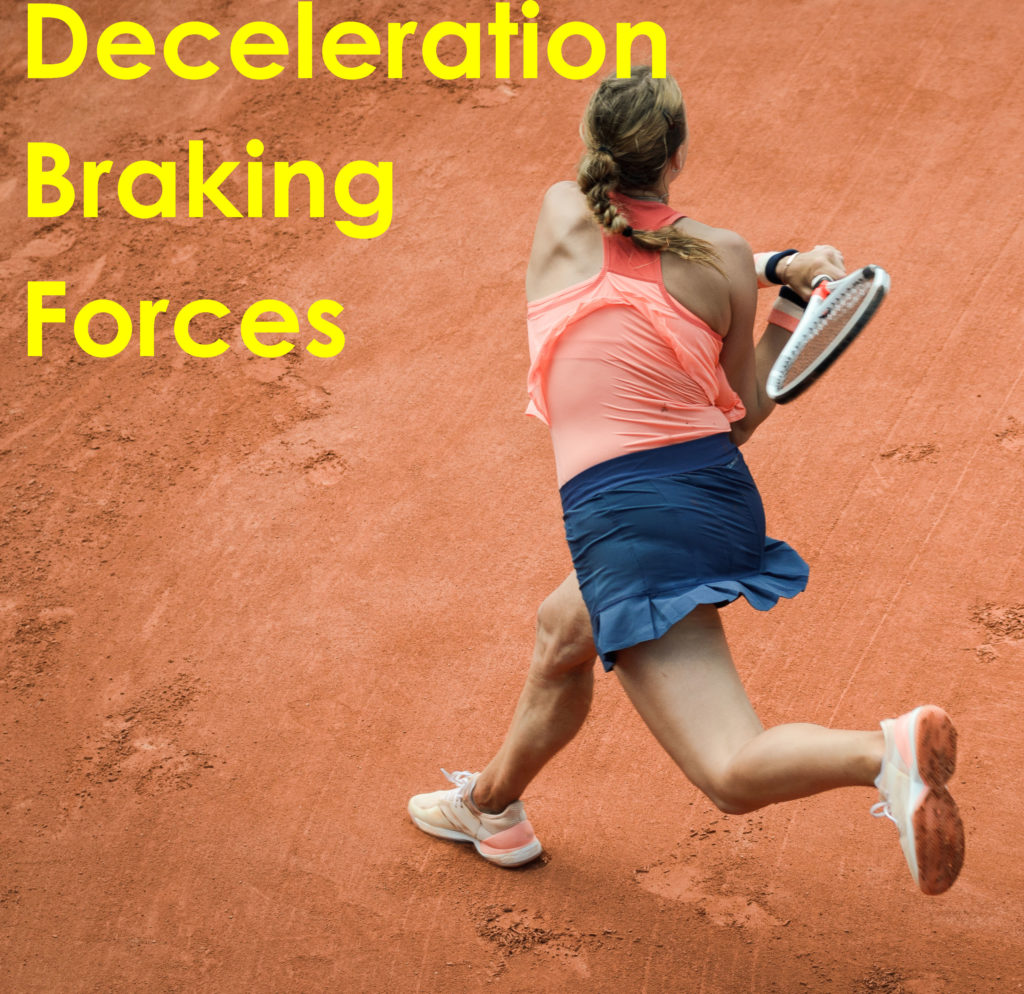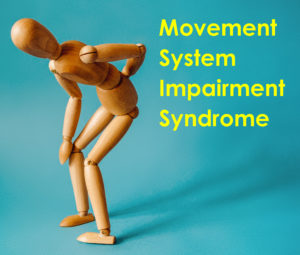Adding observation of deceleration forces to diagnosis & treatment of movement system impairment syndromes & musculoskeletal pain syndromes

Shirley Sahrmann and colleagues share an elegant clinical reasoning process model to diagnose and treat musculoskeletal pain syndromes and movement system problems. The movement system is physiological organ systems that interact to produce movement of the body and its parts. The basis is alignment in a deviant position and repeated deviant movements in a specific direction are thought to associate with several musculoskeletal pain syndromes.

The clinical reasoning process is:
- Identify a movement that elicits symptoms
- Identify which direction of movement elicits symptoms
- Identify movements that occur sooner and farther than ideal which elicit symptoms
- Classify the movement system impairment syndrome based on the direction of movement which elicits symptoms
- Intervene correcting the impaired alignment and movement patterns eliciting the symptoms.
This is a beautiful, effective, and efficient clinical reasoning process. However, I believe there are some shortcomings.
There are four generic parameters of movement:
- Displacement
- Velocity
- Acceleration
- Time
The clinical reasoning of Shirley Sahrmann and colleagues observes movement displacement, and timing of movement. Identifying which direction of movement elicits symptoms is observing displacement. Identifying whether movement occurs sooner and farther than ideal is observing timing and displacement. However, they do not observe the acceleration of movement.
Acceleration and more important the forces involved in deceleration can be a causative factor for movement system problems/injuries. Deceleration is commonly referred to as shock absorption or impact loading forces. Deceleration forces are implicated in many musculoskeletal pain syndromes. Excessive deceleration forces occur in functional activities of jumping, running, cutting changing directions. High impact loading forces or large deceleration forces are a significant factor in plantar heel pain, shin pain, stress fractures, knee pain, low back pain. They also occur in upper extremity injuries associated with throwing, gymnastics, tennis, and other activities.

Historically observing, measuring, and decerning acceleration and deceleration forces in real-world clinics when managing musculoskeletal pain syndromes was not possible. The mechanical force of the movement is not visible. The burgeoning field of wearable technology now allows clinicians to observe, measure, and begin to decern acceleration forces and deceleration forces to better manage movement system impairment syndromes.
Ingrid Eitzen and colleagues provide a review of current literature showing how to use wearable technology to detect shock impacts in occupational and sporting activities. Rud Derio and colleagues use a wearable 3D accelerometer attached to lower leg to measure impact loading to the lower leg.
Old school clinical observation of deceleration forces:
Even without the information wearable accelerators can provide I have recognized the importance of deviant deceleration forces and musculoskeletal pain syndromes.
I evaluated a patient with right knee and shoulder pain. Who was an avid golfer. After a systematic review of the patient’s history, it was apparent that he had undertaken a new golf drill to improve the power of his golf swing when using the golf driver. The golf swing drill is repeatedly swinging the golf club to hit a sandbag. The thought is the drill improves strength and power increasing the distance of his golf drive. Observing him perform the drill it was obvious the deceleration forces hitting the sandbag were extreme. The shock was transferred to his right knee and shoulder. I did not need the new technology to suggest he avoid this drill. I heard the sound. I saw the shimmy or the legs and arms. It would have been nice if I could have used the technology to quantity the shock to his knee and shoulder.
Clomping and stomping when walking or running can be a sign of potentially deviant deceleration forces. Clomping and stomping is not a function of body weight. A small child often sounds loud when walking. It is the manner of walking. Loud walkers’ runners may experience relatively high shock impact loading forces. A few studies (here & here) have shown listening to the sound of a foot strike can be simple poor mans’ accelerometer. The louder the sound the greater the deceleration forces.

Clomping - Stomping - Loud Walking/Running
Three of the 6 current movement system impairment diagnostic classifications for the foot and ankle body region of Sahrmann and colleagues identify directions of movement for plantar heel pain. The diagnostic classifications are pronation, supination, and insufficient dorsiflexion. I have several patients with plantar heel pain who do not meet the criteria for pronation, supination, and insufficient dorsiflexion. However, they do run with too long a stride, with a loud foot strike. When cued to alter the manner running and “quiet” their foot strike is successfully able to run without plantar heel pain. Based on the work of Bryan Heidersihet and colleagues I would argue natural or preferred running form is with excessive impact loading or deceleration forces. Repeated deceleration forces lead to tissue stress, lead to musculoskeletal pain, lead to micro/macro trauma.
How do we utilize this new information?
This technology of using wearable accelerometers to observe acceleration forces and acceleration forces is new to this old Physical Therapist. I am still trying to figure out how to use this information. How to integrate it into the established movement system impairment diagnostic classification system. How to determine when acceleration and decelerations are deviant outside, the ideal. How to intervene to alter deviant deceleration forces.
The parameters of movement are displacement; speed; acceleration; and time. A more comprehensive observation of the human movement system should include observing, measuring, and intervening/altering acceleration and deceleration forces.
The information on this website is not intended or implied to be a substitute for professional medical advice, diagnosis, or treatment. You are encouraged to perform additional research regarding any information contained available through this website with other sources and consult with your physician.
Damien Howell Physical Therapy – 804-647-9499 – Fax: 866-879-8591 At-Home, At Office, At Fitness Facility – I come to you, I do home visits Damien@damienhowellpt.com
1 Comments
Leave a Comment
You must be logged in to post a comment.

Interesting perspective article by Wolfe C, Page P, Voight M, Norman C, Draovitch P. – The Deceleration Index – Is it the Missing Link in Rehabilitation? International Journal of Sports Physical Therapy. 2023;18(2). doi:10.26603/001c.73799 provides ideas on why observing
deceleration is important in the management of musculoskeletal pain syndrome.
Observing deceleration abilities and observing the change of direction abilities has importance for common orthopedic conditions and the risk of falls.